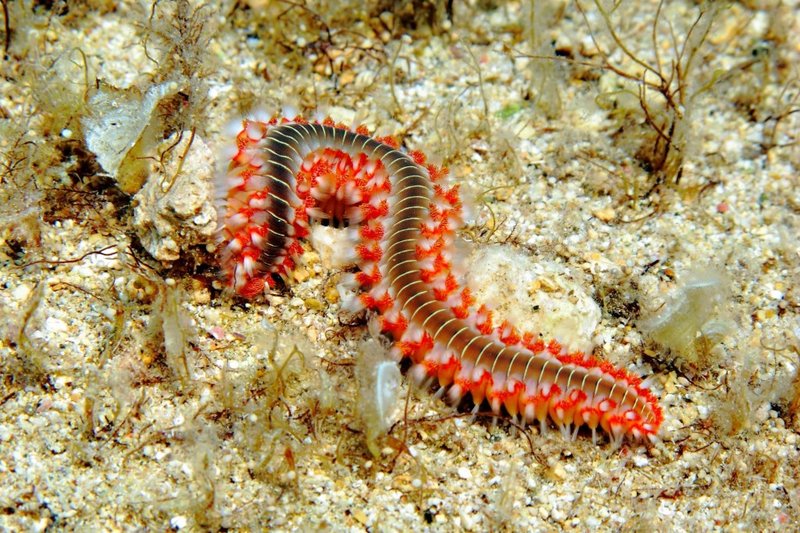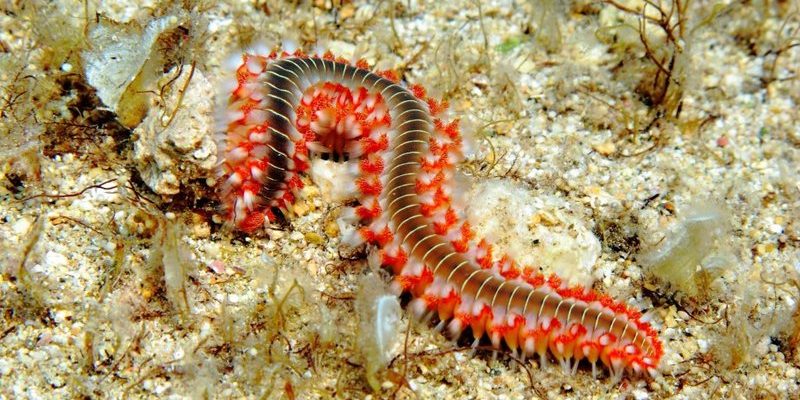
Handling bristle worms is a bit like dancing with a porcupine—it’s risky, but with the right preparation, you can minimize the chance of getting pricked. The good news is that with the proper gloves and gear, you can tackle this task confidently. From durable gloves that protect your skin to tools that help you capture or remove these worms, this guide will cover everything you need to know. So, grab your coffee and let’s explore the best options for handling bristle worms safely and effectively.
Understanding Bristle Worms: Why You Need to Handle Them
Bristle worms, especially the *Eunicidae* family, can be a double-edged sword in your aquarium. On one hand, they help with decomposition and keeping the substrate clean. On the other, if their numbers get out of control, they can become a nuisance, potentially harming your other aquatic pets. Understanding their role in your tank is crucial before you decide to intervene.
So, how do you know when it’s time to step in? If you spot an alarming increase in their population or notice any signs of distress in your fish or corals, it may be time to take action. Approach with caution, as these creatures can sting if provoked. That’s where proper gloves and gear come into play—you want to protect yourself while maintaining a healthy tank environment.
Top Gloves for Handling Bristle Worms
When it comes to selecting gloves, you want something that’s durable but also allows for some dexterity. Here are a few top choices that folks in the aquarium hobby swear by:
- Heavy-duty Nitrile Gloves: These gloves are puncture-resistant and provide a good grip, ideal for handling bristle worms. Look for gloves that are at least 6 mil thick—this thickness offers a balance of sensitivity and protection.
- Latex Gloves: If you’re not allergic, latex gloves can be a good option. They’re thin enough to give you lots of feel but won’t stand up against sharp bristles as well as nitrile.
- Leather Gardening Gloves: These are perfect for those who prefer a natural material. Look for gloves with long cuffs to protect your forearms. Just keep in mind that they might wear out faster than synthetic options.
No matter which pair you choose, always double-check the fit. A snug pair of gloves won’t slip off and will help you maneuver more easily while minimizing the risk of accidental stings.
Essential Tools for Bristle Worm Management
Beyond gloves, having the right tools makes handling bristle worms much easier. Here are a few tools that can help you manage these creatures effectively:
- Forceps: Long, thin forceps can help you grab and remove bristle worms without needing to touch them directly. Look for ones with a good grip and a locking mechanism for extra control.
- Net: A fine-mesh net can be handy for scooping worms from the substrate. It helps minimize the chances of injury to both you and the worm, making it a gentle option.
- Siphon or Turkey Baster: Use a siphon to remove unwanted worms quickly, especially if you’re working with a large tank. A turkey baster can direct water flow to help dislodge them from rocks or corals.
Having the right tools at hand not only makes the process safer but also more efficient. You’ll feel like a pro in no time!
Protective Clothing: A Smart Choice
While gloves are crucial, don’t underestimate the importance of other protective clothing. Depending on how many bristle worms you’re dealing with, you might want to consider additional protection. Here’s what you could add to your bristle worm handling kit:
- Long Sleeves: Wearing long sleeves can offer extra protection for your arms, especially if you’re reaching into the tank or handling rocky substrates.
- Goggles: If you’re particularly squeamish about the idea of bristle worms getting in your eyes (understandable), goggles can provide peace of mind as you work.
- Apron or Lab Coat: If you’re really going all out, consider wearing an apron or lab coat to protect your clothing from any slime or debris while you’re working.
Choosing the right protective clothing means you can focus on the task at hand without worrying about getting hurt or dirty.
Cleaning Your Gear After Handling Bristle Worms
Once you’ve dealt with the bristle worms, cleaning your gear properly is essential for both hygiene and longevity. Here’s a simple step-by-step process to follow:
1. **Rinse Thoroughly:** Start by rinsing your gloves and tools with fresh water to remove any residues or slime.
2. **Disinfect:** Use a mild bleach solution (one part bleach to ten parts water) to disinfect, but do this in a well-ventilated area.
3. **Dry Completely:** Make sure everything is completely dry before storing. This prevents any moisture buildup that could lead to mold or bacteria.
4. **Store Safely:** Store your gear in a clean, dry place to keep it ready for the next time you need to handle bristle worms.
By taking the time to clean and store your gear properly, you’ll ensure it’s always in good shape for your next aquarium task.
Common Mistakes to Avoid When Handling Bristle Worms
Even with the right gear, there are a few common pitfalls that can trip up novice aquarium enthusiasts. Here’s what to watch out for:
- Rushing the Process: It’s easy to get anxious and hurry through handling, but take your time. A rushed approach can lead to accidents—both for you and the worms.
- Ignoring Your Safety Gear: Even if you’re feeling confident, never skip your gloves or protective gear. It only takes one unexpected sting to remind you how important they are.
- Failing to Research: Understand the specific bristle worm species in your tank. Not all are harmful, and some can benefit your aquarium. Do a little homework before you act.
By being aware of these common mistakes, you’ll navigate the bristle worm handling process with more ease and confidence.
Handling bristle worms can seem daunting at first, but with the right gloves and gear, you’ll be well-prepared. From heavy-duty nitrile gloves to essential tools like forceps and nets, making the right choices ensures your safety and success. Remember to take your time, keep your gear clean, and learn about the specific species you’re dealing with.
So, the next time you find yourself face-to-face with these spiny critters, you’ll know just how to handle them like a pro. Your aquarium will thank you for it!

